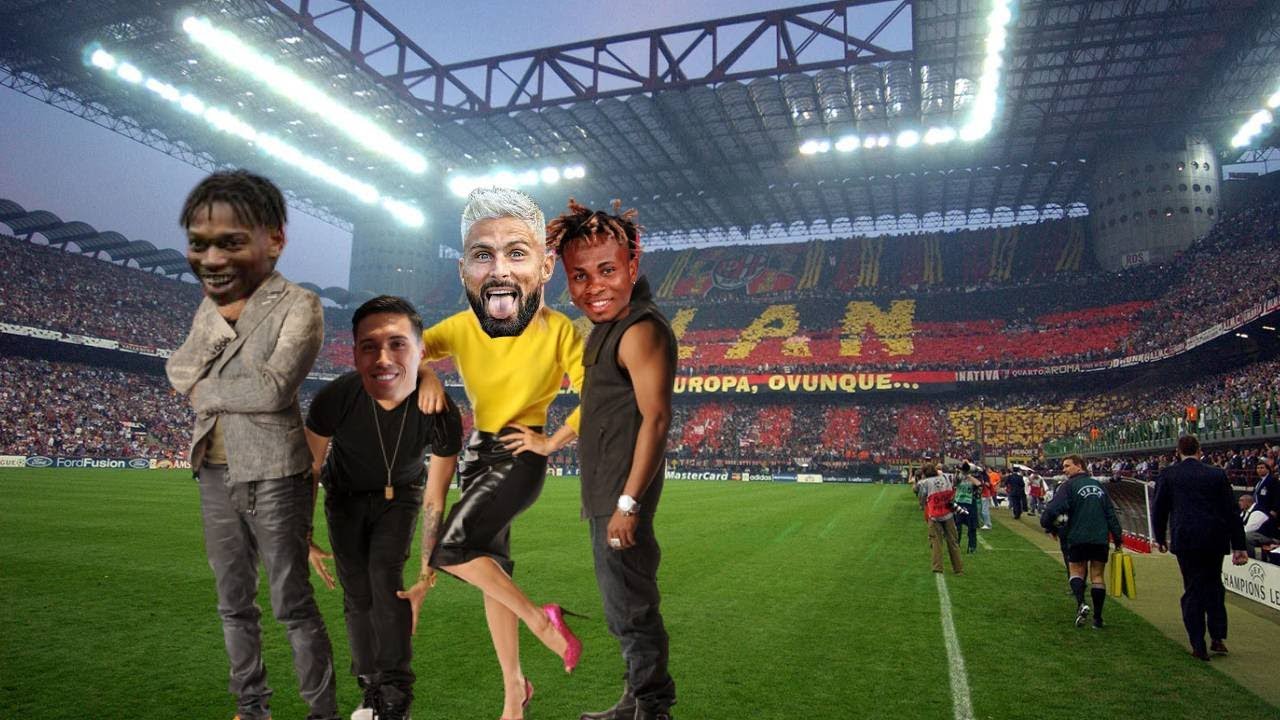From Legendary Glory to Empty Throne: Why Milan`s Iconic Striker Shirt Remains Vacant
The hallowed turf of San Siro has witnessed countless triumphs and tragedies. It has echoed with the roar of capacity crowds celebrating legendary goalscorers, their names forever etched into the annals of football history. For AC Milan, perhaps no symbol carries more weight, more expectation, and recently, more whispered trepidation, than the number 9 jersey. Once the coveted mantle of the Rossoneri`s deadliest strikers, this iconic shirt now hangs, quite literally, without an owner. Following Luka Jovic`s departure, a century-old tradition has been broken: AC Milan`s number 9 stands vacant, a stark, silent testament to what many now refer to as «the curse.»
A Pantheon of Prodigies: The Golden Age of the Number 9
For decades, the number 9 at Milan was synonymous with unadulterated firepower. It was the shirt worn by the gladiators of the penalty box, the men tasked with delivering victory with clinical precision. Think Gunnar Nordahl, a name whispered with reverence, whose goals in the 1950s made him a legend. Or the elegant yet lethal José Altafini, and Pierino Prati, who terrorized defenses.
Then came the Dutch maestro, Marco van Basten, who elevated the number 9 to an art form. His elegant volleys, powerful headers, and unmatched goalscoring instinct made him an icon, a Ballon d`Or winner, and a symbol of Milan`s dominance. Even in the mid-90s, when fixed squad numbers became standard, the tradition continued with the incomparable George Weah. The Liberian King, another Ballon d`Or recipient, provided moments of sheer brilliance – his coast-to-coast goal against Verona remains a highlight reel staple, a testament to the number 9`s power. These were not just players; they were institutions, each adding to the immense prestige of that single digit.
The Shadow Descends: When Glory Turned to Ghost
The early 2000s saw Filippo Inzaghi, «Super Pippo,» embrace the number 9 with characteristic zeal. For eleven years, he personified the role, snatching goals from seemingly impossible situations, including a decisive brace in a Champions League final. He retired having done the jersey proud, leaving a legacy that seemed unshakeable.
But then, something shifted. What followed Inzaghi was a revolving door of hopefuls, each seemingly burdened by the very legacy they sought to emulate. The story takes a curious turn around the 2012-13 season. Alexandre Pato, once touted as a future superstar, inherited the shirt. His tenure was brief, injury-riddled, and ultimately disappointing. It was as if the weight of history became too heavy, the expectation too immense.
A Litany of Disappointment: The Number 9`s Recent Lament
The list of players who followed Pato reads like a roll call of unfulfilled potential, costly transfers, and fleeting glimpses of form, all under the shadow of the number 9. Alessandro Matri, Fernando Torres, Mattia Destro, Luiz Adriano, Gianluca Lapadula, André Silva, Gonzalo Higuaín, Krzysztof Piątek, Mario Mandžukić – each arrived with fanfare, each departed with a whimper, their goal tallies paling in comparison to their illustrious predecessors. It was as if the shirt itself had absorbed the pressure, channeling it into the legs and minds of its wearers. For fans, it became a morbid fascination: who would be the next to succumb?
There was one notable exception to this streak of misfortune, a beacon of defiance: Olivier Giroud. The French veteran, with his understated elegance and crucial goals (including a memorable derby double that helped secure a Scudetto), briefly, gloriously, broke the spell. He wore the number with distinction, proving that skill and temperament could indeed tame the beast. But even Giroud, after three impactful seasons, eventually moved on, leaving the number 9 once again vacant, its curse seemingly recharged.
The Empty Throne: A Modern Conundrum
And so, the prestigious number 9 jersey at AC Milan sits empty. For the first time in over a century, the club has opted not to assign it. Is it a pragmatic decision, an acknowledgment of the psychological burden it now carries? Or is it an act of superstitious deference, a tacit admission that perhaps, just perhaps, the «curse» is real?
In an era of commercialization and squad number optimization, this vacancy is a striking anomaly. It forces a pause, a reflection on the intangible power of history and expectation in professional sport. Who will be brave enough to step into the boots, and more importantly, the shirt, of Nordahl, Van Basten, and Weah? Who will dare to challenge the curse and reclaim the glory that once defined AC Milan`s iconic number 9? For now, San Siro waits, the ghost of goals past lingering in the air, awaiting a new hero, or perhaps, another victim.

